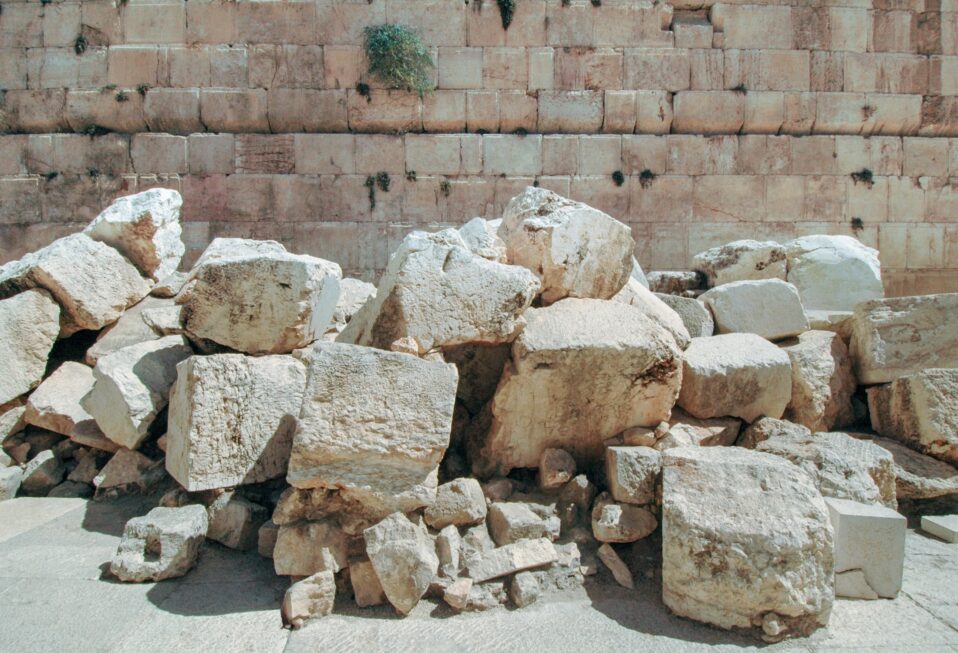By Stephen Faircloth
In the fifth month of the Hebrew calendar, on the seventh day, during the nineteenth year of King Nebuchadnezzar’s reign, his captain of the guard, Nebuzaradan, arrived in Jerusalem. He set fire to the Temple of the Lord, the royal palace, and every important building in the city. The destruction was total. Jerusalem was left in ruins (2 Kings 25:8-9).
Tisha B’Av, meaning “the ninth of Av,” is recognized as the most sorrowful day in the Jewish year. It is a solemn fast day that remembers not only the destruction of the First and Second Temples in Jerusalem, but also centuries of suffering and loss endured by the Jewish people.
Although rooted in the Bible, the observance of Tisha B’Av is established through Rabbinic tradition. It concludes a three-week period of mourning that begins with the fast of the 17th of Tammuz, marking the breaching of Jerusalem’s walls, and culminates in the fall of the Temple.
Jewish tradition holds that both Temples were destroyed on the exact same Hebrew date, though they fell nearly 650 years apart. The First Temple, constructed by King Solomon, was destroyed by the Babylonians in 586 B.C. The Second Temple, rebuilt after the Babylonian exile and later enlarged by King Herod, was razed by the Romans in 70 A.D.
But the tragedies tied to Tisha B’Av extend far beyond ancient ruins. Over the centuries, this date has come to symbolize the collective grief of a people who have endured exile, persecution, and displacement again and again.
Some of the darkest moments in Jewish history coincided with Tisha B’Av:
- The expulsion from England in 1290 was decreed on this day.
- In 1492, Spain’s Alhambra Decree gave Jews until the end of July—Tisha B’Av that year—to leave the country or face forced conversion or death.
- Pogroms, massacres, and the horrors of the Holocaust have also become part of the broader legacy remembered on this day.
- In 2005, the Disengagement from Gaza, which saw thousands of Jewish families uprooted from their homes, concluded just as Tisha B’Av ended.
- On October 7, 2023, over 1,200 Israelis were murdered in a Hamas-led massacre, the deadliest day for Jews since the Holocaust.
A story often shared to capture the emotional depth of Tisha B’Av involves Napoleon Bonaparte. While passing through a Jewish village in Europe, he heard sobbing from a nearby synagogue. Curious, he looked inside and saw men and women sitting on the floor, dimly lit by candlelight, reading from ancient texts and mourning.
Perplexed, Napoleon asked what tragedy had just occurred. His advisor explained that no new disaster had taken place. Instead, the Jewish people were observing their annual day of mourning for the destruction of their Temple—events that had taken place nearly two thousand years earlier.
Moved by their enduring devotion, Napoleon reportedly said, “A people who mourns for their Temple for so long will surely be rewarded with its restoration.”
Today, the observance continues much as it has for centuries. The Book of Lamentations is read aloud in synagogues, often in a dim setting that reflects the solemnity of the day. Traditional customs include sitting low to the ground, refraining from greetings, and fasting from food and drink for 25 hours. In Jerusalem, thousands gather to walk along the Old City walls, honoring the memory of what was lost and hoping for what is yet to come.
Tisha B’Av is not only a day of sorrow but also a testament to the Jewish people’s resilience and unwavering hope. It reminds us that even in the ashes of history, faith endures.
Stephen Faircloth is the President of CBN Israel, where he is dedicated to supporting both the nation and the people of Israel. He leads advocacy and humanitarian efforts that deliver practical aid and lasting hope to vulnerable groups, including terror victims, Holocaust survivors, refugees, and families in crisis. Before assuming this role, Stephen helped launch an initiative that brought Christian groups such as pastors, churches, students, and youth to the Holy Land, enabling them to experience Israel and encounter their faith where it began.




Post a comment